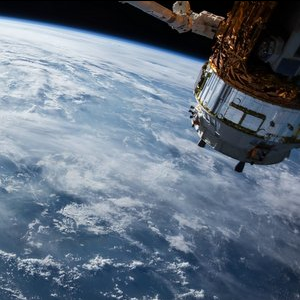Scientists at the Samara National Research University named after Academician S.P. Korolev are developing an optimal system for protecting spacecrafts from the damaging effects of loud noise that occurs when launching vehicles. The development aimed to help increase the volume and weight of the payload put into orbit is funded by a grant from the President of Russia, which was issued for research in 2020-2021.
At launch and during the flight of the launch vehicle a large amount of acoustic energy is released that exerts a powerful sound pressure on the rocket itself and its payload — about 160 dB. Noise influences extremely sensitive parts and components of the onboard and scientific equipment of satellites and can cause destructive vibrations of their components. To absorb this energy the head fairings of the launch vehicles are coated with sound-absorbing materials from the inside.
"Now these materials cover the entire inner surface of the block where the satellite is located. This increases the total weight and reduces free space," said the project manager, associate professor of the department of automatic systems of power plants at Samara University, Ph.D. Arthur Safin. "We offer a method that will make it possible to place sound-absorbing material inside the unit in the most optimal way, minimizing the amount of material used and the volume occupied by it. This will increase useful volume and payload of launch vehicle, which means that we can launch spacecraft of a larger size and weight. "
Now scientists are working on a mathematical model and are conducting experiments with polyurethane foam (PUF) in an impedance pipe to measure sound absorption coefficients. Broadband noise is fed into a tube equipped with two microphones, a flat sound wave is formed, that falls on the PPU sample and is reflected back. By measuring sound pressure at two points in the pipe the sound absorption coefficient can be calculated.
"The result of our work will be a mathematical model on the basis of which we will develop a computer program — a kind of virtual double. With its help it will be possible to develop the technology without expensive experimental research. It will be possible to add the data of a satellite in the program, and it will show precisely the place and the volume sound-absorbing material should be put in order to find optimal way of protecting the spacecraft equipment from powerful acoustic energy," said Arthur Safin.
Scientists do not yet give an accurate forecast of how much it will be possible to increase the weight and payload of the launch vehicle through this optimization, however, the development will surely have an economic effect. According to data from open sources, the cost of launching into orbit of only 1 kg of cargo is thousands of dollars.
Safin has been doing research in the field of space technology protection from noise for the last two years, by now a number of experimental works have been carried out and several scientific publications on this topic have been published. According to the young scientist analogues to this method have not been found in foreign scientific literature, at least in available open sources.
Earlier, in 2011-2014, Safin conducted similar studies to reduce aircraft engine noise. Laboratory experiments showed that the sound-absorbing elements made of metal rubber (metal rubber is a material developed at Samara University) developed by Safin are twice as effective as those traditionally used in aviation.
For reference:
-
Vibration and noise accompany the work of any mechanisms and devices used in all areas of life: from computers to airplanes and spaceships. Even the smallest fluctuations seriously affect the quality and reliability of individual nodes, as well as the entire system operation.
Modern systems of acoustic and vibration protection are able to extend the life of complex and expensive equipment several times, as well as make its use more convenient and comfortable. -
Samara (Kuibyshev) school of dynamics and vibroacoustics is one of the most respected world scientific and practical schools. Its foundations were laid more than half a century ago, and the theme of the dynamics and vibration of machines in the activity of the KuAI-SSAU-Samara National Research University occupies a special place.
Samara University scientists’ developments were widely used in creating advanced models of aviation and rocket and space technology equipment and engines, as well as other high-tech products. - Arthur Safin — Associate Professor, Ph.D., Department of Automatic Systems of Power Plants, Samara University. In December 2019, he won the competition to receive grants from the President of Russia to support young scientists. In the category of "young candidates of science", 1509 scientists from all over the country applied for 400 grants. Quotas by fields of knowledge were determined in such a way that the competition averaged 3.6 applications for one grant.
